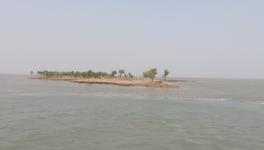Severe Cyclonic Storm Nivar Approaching Tamil Nadu and Puducherry
A severe cyclonic storm, for the second time in the year, is approaching India’s South Coast, Tamil Nadu and Puducherry. The storm originated in the southwest Bay of Bengal as a deep depression.
As per the latest bulletin issued by IMD (Indian Meteorological Department), at 11.30 AM on November 24, the storm remained stationary till the morning and was found located in the Southwest Bay of Bengal at a distance of 410 kilometres east-southeast of Puducherry and 450 kilometres southeast of Chennai. The IMD said that the storm is going to intensify into a severe cyclonic storm during the next 24 hours.
The bulletin further predicts that the cyclonic storm is very likely to move west and northwestward from its current position in the next 12 hours and then it will deviate to travel northwestward thereafter. This will lead the cyclonic storm to cross Tamil Nadu and Puducherry coasts in the areas between Karaikal and Mamallapuram around Puducherry by the evening of November 25 (Wednesday) and then it will become a full-fledged sever cyclonic storm having wind speed of 100-110 km/hr and with gusting speed upto 120km/hr.
The IMD also predicted that by the midnight of November 24, the storm will develop into a severe cyclonic storm and will remain as such for the whole day of November 25. Hereafter, the storm will start losing its intensity by early morning of November 26 with wind speed of 80-90 km/hr with gusts of 100km/hr and by November 27 the storm will become a mere depression with wind speed of 30-40 km/hr with gusts of 50km/hr.
The cyclonic storm will drench several parts of Tamin Nadu, Puducherry, South coastal Andhra Pradesh, Rayalaseema and southeast Telangana. Viewing this, the IMD has issued a red alert for Tamil Nadu and Puducherry and a yellow warning for coastal Andhra Pradesh and Telangana.
HOW IS A CYCLONE FORMED
The basic component for the formation of a cyclone is warm, moist air over the ocean. As air warms it moves upward. So, when the air over an ocean is sufficiently warm it moves up, away from the ocean surface leaving less air near the surface and thus causing a low-pressure area below. This is called the depression.
When such low-pressure area develops, air from the surrounding area with a higher-pressure level pushes into the low-pressure area. As a result, the cool air becomes warm and moist and eventually moves upward. So, a cycle occurs where, warm air moves away from the ocean surface causing a low-pressure area and then cool air coming to this region and eventually gets warmed and again moving up.
The warmed and moist air rises and gets cooled upward. As a result of this cooling, the water (moisture) in the air condenses and forms clouds. The entire system of cloud and wind spin grows further which is essentially fuelled by the warm ocean surface.
Thereafter, as a result of the rotation of the storm system, an eye is developed in the centre of rotation. The eye of the storm appears to be calm with a low air pressure.
When it reaches the land, the storm weakens as it gets cut off from the fuel supply, that is the warm ocean air. The cloud that a storm carries can inundate a large expanse of areas where it crosses over.
Get the latest reports & analysis with people's perspective on Protests, movements & deep analytical videos, discussions of the current affairs in your Telegram app. Subscribe to NewsClick's Telegram channel & get Real-Time updates on stories, as they get published on our website.
























